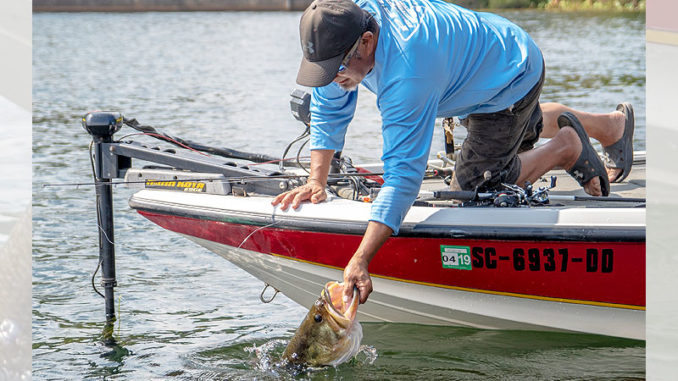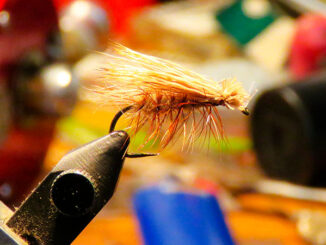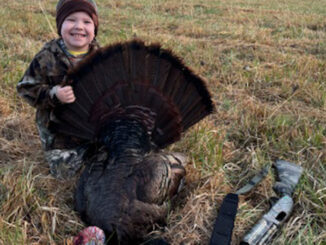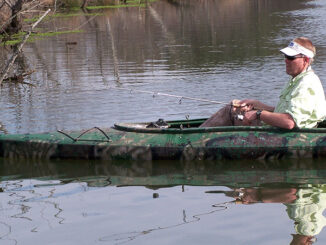
Hungry bass invade deep structure; you find it, you catch ‘em
A lot of bass fishermen can’t wait for spring when fish move shallow and feed up for the spawn. That’s when they’re in range of anglers of all talent levels.
Me? I can’t wait until spring is almost over. When Memorial Day rolls around, I really start to perk up. That’s because I love fishing when the spawn is over and bass move toward deep water. It’s how I grew up fishing on High Rock Lake. You had to be able to fish a crankbait, or you had your head handed to you in every tournament.
So don’t be surprised if I tell you that June is my favorite month to fish for bass. It’s just a little bit ahead of October, my second-favorite month. If every month could be June or October, I’d fish every day, year-round.
June fishing can be easier than spring
One reason I really like June is that fishing can be so easy. You can catch bass on just about anything. I prefer catching them on structure, catching fish that have moved out and are ganged up a little bit. You can catch fish on a lot of different baits. A buzzbait, a little flat worm, or a shaky head finesse worm are all good options. But to catch a big stringer, you need to be fishing a crankbait for fish that have moved out to deeper water.
At different lakes, the bass act a little different as far as when they move out and how far they move out. Just assume that they’re going to move to the first deeper water outside of a spawning area. Some lakes, they don’t get real deep. Some places, they get 20 or 25 feet deep. A Berkley Dredger 25.5 is made for those kinds of lakes. You can get that bait down that deep, and it doesn’t work you too hard. Sometimes, you can take a big, lipless bait like a War Pig and yo-yo it up and down and catch a big fish.
Deep is important
On a lot of the lakes I fish in North Carolina — Buggs Island, Gaston, Norman, Wylie — they are going to get out there close to a creek channel or the river channel. Don’t be scared to fish deep. People tend to stay a little too shallow. You may catch some fish on a topwater early in the morning, but they’re going to be moving out. About 80 percent of the fish will be in deep water.
You’re looking for some kind of cover or structure that’s out on a sharp break, where the water drops pretty quickly off the end of a flat. Normally, the best places are going to have wood on them — not brush piles, which are better in the fall, but mostly stumps on rocky bottoms, hard bottoms. The key is finding out what kinds of places they’re on, where they’re ganging up, catching them, and then trying to find other spots that are the same kinds of places. The sharp break is the most-important part, however.
Retrieve from shallow to deep
When I find a spot, I’ll set up in deep water and make a long cast toward shallow water. Then I’ll retrieve my crankbait from shallow to deep. I’ll change the angle of my casts some, so I run my bait through, say, a stump field from different angles. But my favorite way to fish a bait is across the current. They just bite better that way.
I don’t think bass bite the way they used to. In years past, I could pull up on a spot where they were ganged up, and it might just take four or five casts to get them fired up. Then you could catch ‘em all. Now, it might take you 20 or 25 casts to catch a fish and get the school fired up. You almost have to coax ‘em into biting now.
Feeling blue
Changing colors is another thing I’ll do when I’m on a spot where I know fish are, but can’t get them to bite. Colors in the blue range are great in June. Blueback herring and key blue are probably the best. I also like rubbertail, which is a bream color, and lone ranger. Both of those colors have got a lot of chartreuse and green.
Making long casts is important. You get the most depth out of your crankbait on the longest cast you can make. I like to fish a deep-diving crankbait like a Dredger 25.5 on a 7-foot-11 Lews David Fritts Perfect Crankbait rod. Now I realize that a 7-foot-6 rod might be a little easier for most people to handle. I spool a BB-1 reel with 10-pound Sensation. You want a low-stretch monofilament, not fluorocarbon.
Bright is right
One thing to understand is that most bass fishermen think they can catch fish better in low-light conditions like early morning and late afternoon. But if you’re fishing deep structure, you want a bright, sunny day. I have caught a lot more fish over the years in the middle of the day and the afternoon when the sun has been out a while. They bite better on structure when the sun is out.
An interesting note. When you get on a nice gang of fish that are out there, a lot of times you catch the biggest bass first. And a lot of times, you catch a bunch of 3-pounders, then all the sudden you catch a 6-pounder. There is no rhyme or reason. But sometimes it works like that.
So get to your favorite lake and spend some time out away from the bank. The big fish are out in deep water, and that’s where you have to target them.
Click here to read about David Fritts being inducted into the Bass Fishing Hall of Fame




